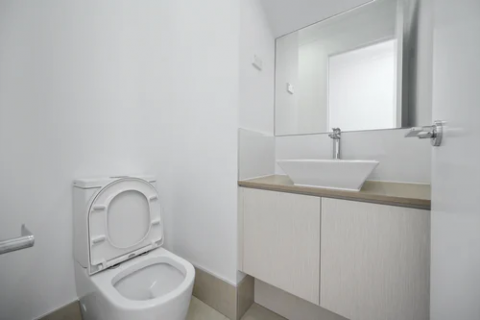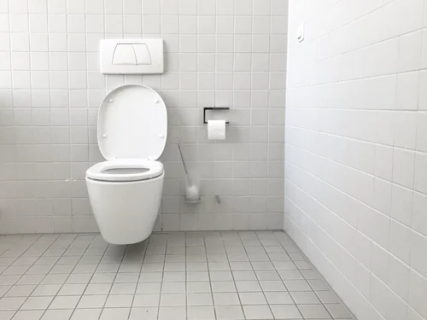When most people decide to renovate their homes, they often do quite the digging. From researching bedroom renovation ideas to checking out kitchen and dining designs, people often have the entire house covered. Well, almost the entire house, that is. We’ve come to find that most of the time people actually skip one very important part of the home ─ the toilet.
Yes. You read that right. The toilet is that important part of the home most people forget to pay attention to during home repair and renovation. This shouldn’t be the case though, as they are just as important as any other part of your home. Think otherwise? Imagine living in a home WITHOUT one! See how important it is now?
Since we have established just how important toilets are and that most people don’t give them as much attention, today, we provide a guide to toilets about different types of toilets, their pros, and their cons.
Before then though, we need to answer a very important question:
What Are Toilets?

According to the dictionary, a toilet is any fixture that usually consists of a water-flushed bowl and seat used for defecation and urination. But while this definition is technically correct, it is rather restricting. This is because there are many modern toilets that don’t completely fit this description.
Take for example a composting toilet (not sure what that is? Stick with us to find out!). This kind of toilet is essentially a dry toilet, i.e it does not use water to dispose of its content. If one were to go by the dictionary definition of toilets, then such a toilet shouldn’t be considered a toilet at all.
So what’s a more accurate definition of a toilet? Glad you asked! To put it simply, a toilet is any structure that directly collects human waste and disposes of said waste via whatever means possible.
Types of Toilets

Now that we have established a more encompassing definition, let’s move to the main event ─ what are the different types of toilets?
Before getting to that though, let’s make one thing clear. Toilets can be classified on different bases. They can be classified based on how they function, how they look, how they are installed, e.t.c.
Today, we would be classifying them on two major bases: how they are built/look and how they dispose of waste.
How They Look

Based on how toilets are built, there are three main types of toilets:
1. Two-Piece Toilets
Two-piece toilets are probably the most common types of toilets you’d find anywhere in the world. As the name implies, two-piece toilets are toilets that come in two pieces i.e. the toilet’s water tank and bowl are separate. These two pieces are then connected by a plastic flush pipe.
Pros
Costs less.
The tank and bowl can be replaced separately.
Since the tank and bowl come separately, installation is easier due to the reduced weight.
Cons
It is more difficult to clean due to the hard-to-reach joining areas that connect the tank to the bowl.
Over time, the joining area begins to deteriorate and leaks start to occur. These parts often need regular maintenance.
Dirt and grime often form around the joining area.
Doesn’t look as sleek as the other toilets in this category.
2. One-Piece Toilet
Also known as close-coupled toilets, these toilets are essentially the opposite of two-piece toilets.
Unlike the two-piece toilet, these toilets come in just one package ─ the tank and bowl are combined into a single structure. This takes away the need for a connecting area and the disadvantages that come with it. It also does a lot to increase your home’s aesthetics making it look cheek and modern.
Pros
Great aesthetic value.
Since there are no joining areas, there is no need for regular maintenance and fewer chances of leaks occurring.
More durable.
Saves more space than two-piece toilets.
Cons
More expensive than two-piece toilets.
It’s impossible to replace just the tank or the bowl. If there is any need to replace one, the whole toilet would need to be replaced.
Harder to handle during installation due to the increased weight. Once you have the toilet in place, however, most of the job is done.
3. Back-to-wall Toilet
Ever come across a toilet without a tank? Chances are, what you saw was a back-to-wall toilet. So what exactly are these toilets? Well, back-to-wall toilets are toilets without tanks, and they are so named because, when you use them, you essentially have your back to the wall.
Alright, that’s not ENTIRELY true. You see, back to wall toilets are not actually toilets without a tank; they just seem that way. The trick is that their tanks are usually hidden, sometimes behind a piece of nearby furniture and other times in the wall behind the toilet itself (aka in-wall cistern toilets).
Pros
The ultimate minimalist toilet that takes up very little space.
Gives your home a futuristic look.
Best aesthetics in this category.
Easy to clean.
Cons
Most expensive toilet in this category to buy and install.
Repair and installation require the hands of experts.
How They Dispose of Waste

Toilets are also often classified by how they function. Toilets in this category include:
1. Regular Flush Toilets
Also known as single flush toilets, these are the kinds of toilets you’re most likely to find around. They are those toilets that use a single flush mechanism to dispose of whatever waste they contain. These toilets use a button or lever to trigger the flush mechanism, and once the trigger is activated, all the water in the tanks is dispensed at once to flush the waste.
Pros
Cheaper than the alternatives in this category
Easier to install and repair when compared to other toilets in this category.
Cons
Since the same amount of water is used to dispose of every kind of waste, this type of toilet wastes water.
This kind of toilet is rather old school.
2. Dual Flush Toilets
Similar to single flush toilets, dual flush toilets also utilize a water-based mechanism to dispose of their content. Unlike the regular flush toilets, however, the dual flush toilet doesn’t use a one flush mechanism.
In this kind of toilet, there are often two buttons that trigger flushing ─ one button dispenses just a bit of water for flushing liquid wastes, while the other dispenses a similar amount of water to that of a single flush toilet to flush solid wastes.
Pros
Relatively cheap when compared to some other toilets in this category.
Conserves water.
Easier to install and repair when compared to other toilets in this category.
Gives your home a modern feel.
Cons
Slightly more expensive than single flush toilets.
3. Connected Toilets
If you thought dual flush toilets looked modern, wait till you get a load of connected toilets!
Also known as smart toilets, connected toilets are exactly what they sound like ─ toilets with the ability to connect to your devices and gadgets. Surprised? Don’t be! Technology is advancing, and toilets aren’t being left out! And when we say these toilets are advanced, we really mean it. After all, these toilets can do so much more than your average toilet can. From automatically flushing itself to sensing any signs of illnesses in the waste it contains, this toilet stands way ahead of the rest in terms of functionality.
Pros
Much more hygienic.
Has voice and/or remote flushing capabilities.
Does much more than your average toilet.
Has a futuristic feel to it.
Cons
Most expensive toilet to buy and install in this category.
Installation, maintenance, and repair require the hands of experienced professionals.
Consumes more power than the other toilets in this category.
4. Composting Toilets
Also known as dry toilets, composting toilets are one of the more exotic types of toilets. And why wouldn’t they be? These toilets essentially take the term toilets to a whole new level!
As the name dry toilet implies, these toilets are toilets that essentially work without water i.e they are toilets that do NOT flush.
So how do they dispose of their collected waste? Well, they utilize a biological process called composting which works by decomposing organic waste. This way, their content doesn’t get conveyed to a different location with water, they actually get stored and gradually decomposed over time.
Pros
Reduces the consumption of water.
Reduces the quantity and strength of wastewater.
Consumes little to no power.
Composites from this toilet can be used as manure.
Cons
Requires more work to clean and maintain than other toilets in this category.
Installing this toilet requires some skill.
Disposal of collected waste requires more work and is a lot more unpleasant.
And those are just the most common types of toilets out there. There are still more types of toilets and even more toilet designs you could choose from when repairing or remodelling your house, so why not put some more time into choosing the right toilet when remodelling your home?!
Buying Your Next Toilet
Choosing your next toilet doesn’t have to be a tough decision. By doing the proper research you can narrow down your choices and determine what types of toilets are suitable for your home.
Once you decide which type is for you, it’s time to shop!
Online or in store is the way to go.
There are plenty of websites to find toilets online.
You’ve got big retailers like Caroma or Kohler. On the other hand, you may find it better to shop at smaller establishments that are closer to where you live. Drive around your area and you’d probably notice some showrooms that stock the type of toilet you are looking for.
It’s a good idea to visit a shop in person so you can see and feel the toilet in person.
Furthermore; you can ask for expert advice that will clear up any other questions you might have.
Remember, your toilet is just as important as any other part of your home, so going wrong there would mess up your home’s overall look. Why let that happen when you could simply prevent all that with just a little research?!


